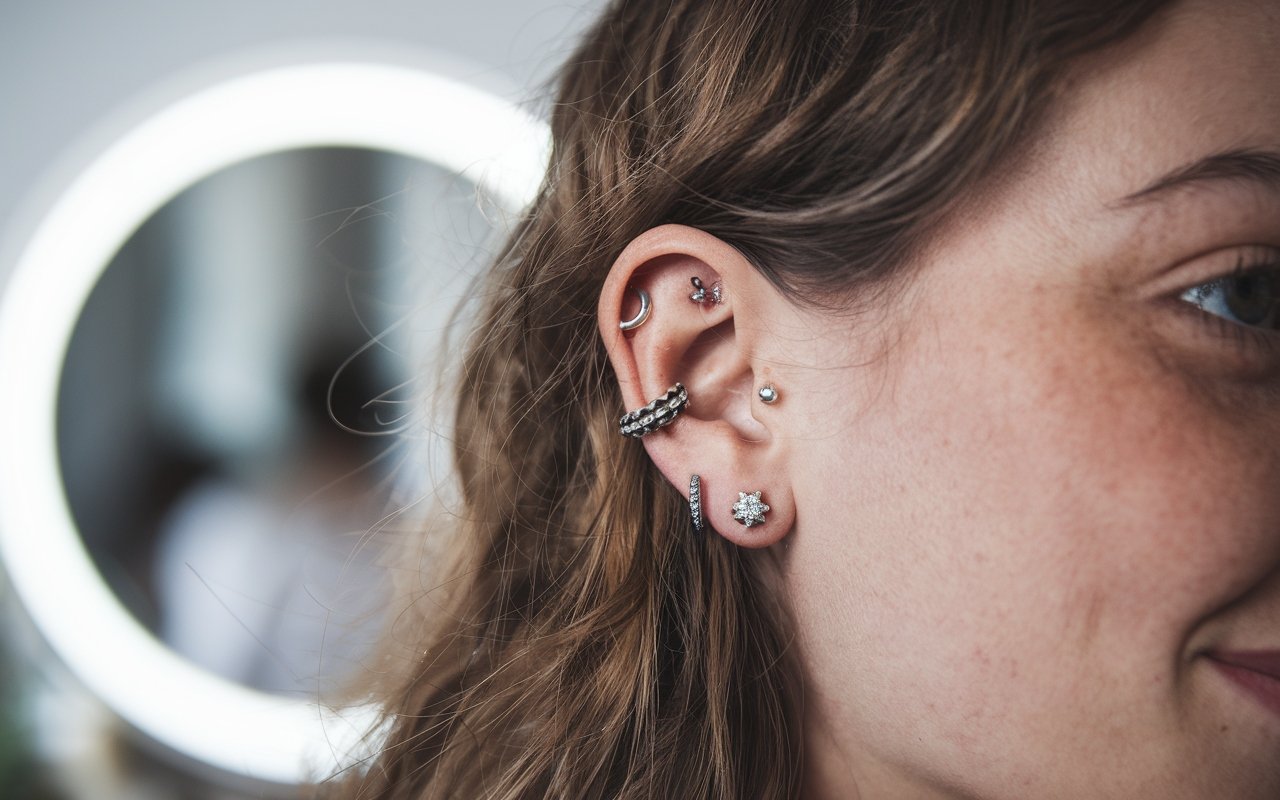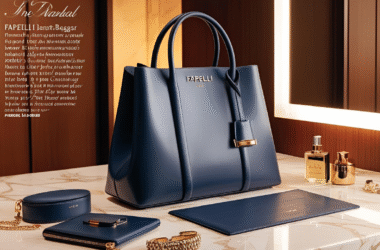Ear piercing has been an enduring form of self-expression, with a vast range of styles suited to different aesthetics, personalities, and cultural preferences. From simple lobe piercings to intricate constellation patterns, each type brings its unique appeal and flair. To make your journey through the world of ear piercings engaging, let’s explore the most popular types, care tips, and trends shaping this timeless form of adornment.
Lobe Piercing
The lobe piercing stands as the most common and versatile choice, offering a soft entry into the world of ear piercings. Situated at the fleshy bottom of the ear, this type often heals relatively quickly, usually within 6-8 weeks. With its simple placement, it is an excellent option for first-timers and remains an enduring favorite for stacking jewelry.
Upper Lobe Piercing
Just above the traditional lobe, the upper lobe piercing adds dimension and creates the opportunity for multi-layered looks. It allows for stacking multiple earrings and provides a delicate, eye-catching aesthetic. Healing time remains similar to the standard lobe, making it both convenient and highly customizable.
Helix Piercing
Moving up the ear, the helix piercing is done along the cartilage of the outer rim. With a reputation for edgy flair, it is one of the most popular cartilage piercings. The standard helix typically sits higher up, while a forward helix is closer to the front of the ear. Healing takes longer than a lobe piercing, averaging three to six months, but the impact is undeniably bold.
Double and Triple Helix Piercings
For a statement look, double and triple helix piercings involve multiple piercings along the outer cartilage. This style offers symmetry and creativity, allowing wearers to experiment with various jewelry combinations. While healing may take several months, the result is striking and versatile.
Conch Piercing
Named for the shell-like structure of the ear, the conch piercing can be either inner or outer, depending on where it sits in the ear’s cartilage. This type often accommodates a stud or hoop that wraps around the ear’s edge, lending a polished and unique appearance. Healing may take up to a year, so proper aftercare is essential.
Tragus Piercing
Located at the small flap of cartilage covering the ear canal, the tragus piercing offers a chic and understated touch. Because of its location, it works well with small studs or hoops. It tends to be slightly more painful than lobe piercings but provides a sleek, minimalist aesthetic that suits many different looks.
Anti-Tragus Piercing
The anti-tragus piercing is found opposite the tragus, on the outer cartilage above the lobe. Though less common, it offers a bold, distinctive flair for those looking to add something different to their ear styling. Healing time varies but usually extends up to 12 months.
Industrial Piercing
For a dramatic and striking appearance, the industrial piercing connects two holes with a single barbell, usually spanning the upper ear cartilage. It exudes an edgy, rebellious vibe but requires meticulous care due to its dual-entry nature. Healing can take up to a year, with extra attention needed to avoid infections.
Daith Piercing
The daith piercing sits within the ear’s innermost cartilage fold and is rumored to alleviate migraines, although scientific evidence remains inconclusive. It remains popular for its unique placement and subtlety, often adorned with small rings or heart-shaped hoops for added charm.
Rook Piercing
Positioned in the cartilage ridge between the outer ear and inner conch, the rook piercing is a distinctive choice. The area’s thickness requires skillful piercing, and healing times may extend up to 12 months. However, the stunning aesthetic achieved with small curved barbells or hoops is well worth the wait.
Snug Piercing
Found on the inner cartilage ridge parallel to the helix, the snug piercing offers a striking and daring look. Its challenging placement makes it less common, but for enthusiasts, it remains a standout option. Healing can be lengthy, requiring meticulous aftercare and patience.
Orbital Piercing
An orbital piercing involves two holes connected by a single piece of jewelry, typically a ring. Often seen in the lobe or cartilage, it creates an eye-catching “orbit” effect, lending elegance and dimension to any ear stack. Healing may range from 8 weeks to several months.
Flat Piercing
As its name suggests, the flat piercing is located on the flat area of the cartilage near the top of the ear. This stylish option is ideal for studs and can be used creatively in constellation patterns. Healing can take 3-12 months, depending on placement and care.
Constellation Piercing
Types of Ear Piercings – Inspired by star patterns, constellation piercings involve multiple piercings arranged artistically along the ear. This highly personalized style allows for limitless creativity and subtle sparkle. Healing times vary based on individual placements, but the results offer a dazzling statement.
Transverse Lobe Piercing
Unlike traditional lobe piercings, the transverse lobe passes horizontally through the ear lobe using a barbell. While it creates a distinctive appearance, it requires specific jewelry and more complex care to avoid complications.
Forward Helix Piercing
The forward helix piercing sits near the front curve of the ear, offering a subtle yet bold touch. Single or multiple forward helix piercings can be arranged, providing stylish customization. Healing times may extend up to 9 months, requiring patience and proper hygiene.
Daith and Conch Stacks
Combining daith and conch piercings is a bold way to amplify an ear’s aesthetic. This intricate stacking technique involves coordinating multiple hoops and studs for an artistic, personalized touch. Healing times can be extensive, but the finished look offers timeless appeal.
Ear Piercing Trends
Modern ear-piercing trends emphasize personalization, symmetry, and subtlety. Constellation patterns, curated ear styling, and unique jewelry combinations reflect individual styles, making ear piercings more creative than ever.
Ear Piercing Aftercare Tips
Proper aftercare remains crucial for ensuring safe healing. Clean piercings twice daily using saline solution, avoid touching the area and steer clear of swimming pools. Adherence to these care routines minimizes complications and encourages smooth healing.
Pain and Sensitivity Considerations
Types of Ear Piercings – Pain tolerance varies based on placement and personal sensitivity. Cartilage piercings often involve more discomfort, while lobe piercings are generally milder. Consulting with an experienced piercer can help ease anxiety and ensure a positive experience.
Choosing Jewelry for Piercings
Jewelry material is pivotal for healing. Opting for hypoallergenic metals like titanium or surgical steel reduces the risk of allergic reactions. Long-term options such as gold and platinum enhance the aesthetics of healed piercings.
Risks and Complications
All piercings carry risks of infection, keloids, and irritation. Proper aftercare, reputable piercers, and quality jewelry reduce these risks. Awareness of potential complications ensures quick intervention and effective solutions.
Ear Piercing Styles for Men
Men often gravitate toward subtle piercings such as the lobe, tragus, and helix. Industrial and cartilage piercings offer edgier options, showcasing a blend of sophistication and boldness.
Cultural Significance of Ear Piercings
Types of Ear Piercings – Throughout history, ear piercings have carried deep cultural and spiritual meaning. Various traditions, from tribal rituals to contemporary fashion, celebrate ear adornments as symbols of identity, beauty, and self-expression.








